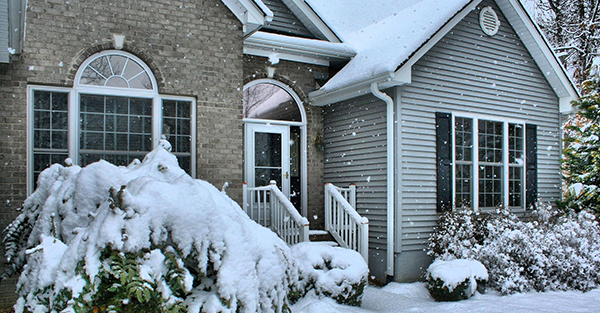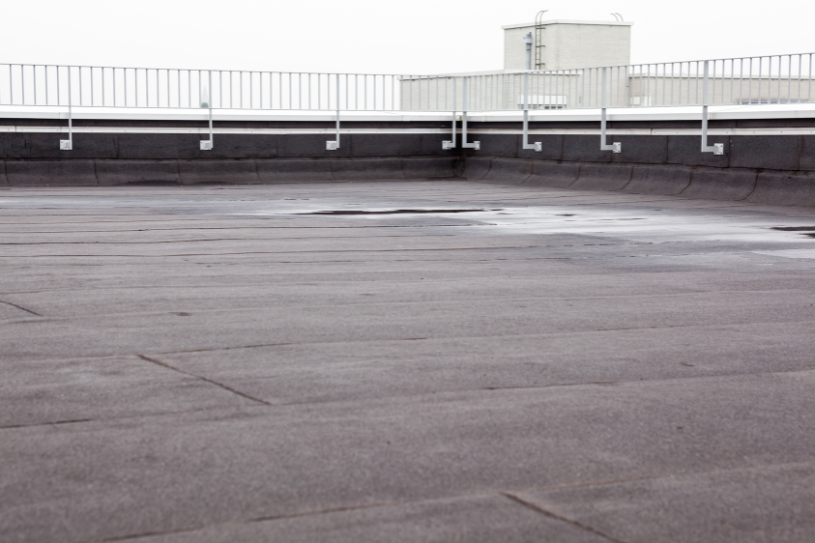
The first time you realize you need to replace your roof, it can feel overwhelming. A new roof is a big investment, and getting it done right is essential. At Hedrick Construction, we’ve taken thousands of central Iowa homeowners through the roof replacement process. In this blog post, we’ll lay out what to expect, from start to finish, so you can stop worrying and start envisioning your beautiful new roof.
How do you know when it’s time for a new roof?
Many homeowners wait until a leak or another major problem forces them to replace their roof. Often, however, signs that a replacement is needed appear long before this.
Water Infiltration
Water infiltration is one of the earliest and clearest signs that your roof needs attention. If you notice signs of excess moisture like mold, a musty smell, damp patches on ceilings or walls, or obvious leaks, investigate the cause promptly. Sometimes, what appears to be a leak is actually condensation, which can usually be remedied by ensuring proper ventilation and insulation in the attic. Whatever the cause, it’s important to address the root of any moisture problem as soon as possible to prevent damage to your home. A reputable contractor who is equipped to deal with either issue can assess the situation and perform whatever repairs or upgrades may be needed.
Shingle Deterioration
As a shingle roof ages, the shingles may start to curl, warp, or even fall off. You might notice smooth spots where the granules have worn away or notice them collecting in your gutters. Additionally, moss growth can break the bonds between shingles and cause their edges to lift up, inviting water into your home.
The intense storms that we often experience in the Midwest can dent or crack roofing materials, dislodge shingles, or cause damage by flinging branches and other debris down onto the roof. Inspect your roof regularly from the ground, taking note of any signs of deterioration. After a storm, inspect your roof again so you can address any damage it might have done as soon as possible. Here are some steps you can take while you’re waiting for the pros to step in.
Structural Issues
A sagging roof is a warning sign that should be addressed as quickly as possible. It may indicate problems with the structural support of your home, such as foundation issues or a need to bolster the roof. A roof that is visibly sagging will most likely need to be replaced.
Climbing Energy Bills
If you’ve noticed an uptick in your energy bills, there could be a number of causes. Among these are roof damage and insufficient insulation. Over time, a roof’s insulating properties can become less effective. If this is a contributing factor, then getting a new roof made with energy-efficient materials like stone-coated steel or shingles that contain reflective granules will help reduce your energy consumption, reduce your utility bills, and take some of the pressure off your HVAC system.
Roof Age
No roof lasts forever. As your roof approaches or exceeds its expected lifespan, you should prepare to get it replaced. Roof life expectancies vary widely depending on the materials used, maintenance, and local conditions. Asphalt shingles can generally be expected to last between 20 and 30 years, and metal roofing may last 40 to 80 years. The International Association of Certified Home Inspectors provides this handy reference that lists life expectancies of several major home components, including roofing materials.
What should you look for in a contractor?
Once you've determined your roof needs to be replaced, choosing the right contractor is just as important as choosing the right materials. Be sure to choose a reputable local company. In central Iowa, we see our share of storm chasers—contractors who show up after big storms and disappear just as quickly. Often, these companies give low estimates and then do shoddy work that they won’t be around to correct. Local roofers not only have to answer to their clientele and maintain their reputations in the community, but they also understand the local climate and how to build roofs that stand up to the weather. You can expect a reputable local contractor to stand behind their work long after the project wraps up.
Even when vetting local companies, be alert to red flags. Any contractor who can’t show proof of licensure, insurance, or bonding or who lacks a physical office should raise immediate concerns. Also be leery of roofers who use high-pressure sales tactics or who don’t offer warranties or other post-installation support.
What should you expect throughout the installation process?
Once you’ve chosen and hired a contractor, there will be a preparatory phase, followed by the actual roof replacement, cleanup, and aftercare.
Before the Installation
Before the crew arrives, it’s important to protect your landscaping and possessions. Cover plants that grow around your roof’s perimeter, and move or cover any outdoor furniture or decorations. You’ll also need to make room for your roofing materials to be delivered. Typically, these are left in the yard or driveway. Be aware that your anticipated start date could shift due to the weather. In Iowa, spring through fall is prime roofing season, but rain, wind, and heat waves can cause delays.
Roof Replacement
The replacement process begins with tearing off the old roofing material, which creates a clear view of the roof deck. From there, the team will inspect the decking and make any necessary repairs. Then, they install underlayment, flashing, and the new shingles, panels, or whatever roofing material you’ve chosen. Once installation is complete, the crew should thoroughly clean up, leaving your yard looking as it did before they arrived. Although crews often use magnetic tools to sweep for stray nails or debris, these aren’t foolproof, so it’s a good idea to wear shoes in your yard after having roof work done.
Most asphalt shingle replacements typically take between one to three days, while projects involving metal or specialty materials often take longer. That said, weather delays are common in the Midwest, and damage that had been hidden beneath the old roofing materials can also extend the timeline as well as increase the cost of the job.
Aftercare
After the work is complete, your contractor should walk you through the finished job, explain what was done, review the details of your warranty, and provide guidance on regular maintenance.
At Hedrick Construction, we know that replacing your roof isn’t just a home improvement project—it’s a major investment. For more than two decades, we’ve been helping homeowners across central Iowa protect their homes with quality roofing, siding, windows, and insulation. As an Owens Corning Platinum Preferred Contractor, we offer expert installation, honest advice, and lasting peace of mind. When you’re ready, we’re here to guide you every step of the way. We’ll make the process smooth and efficient, leaving you with an upgraded home that is well protected from the elements.







Comments